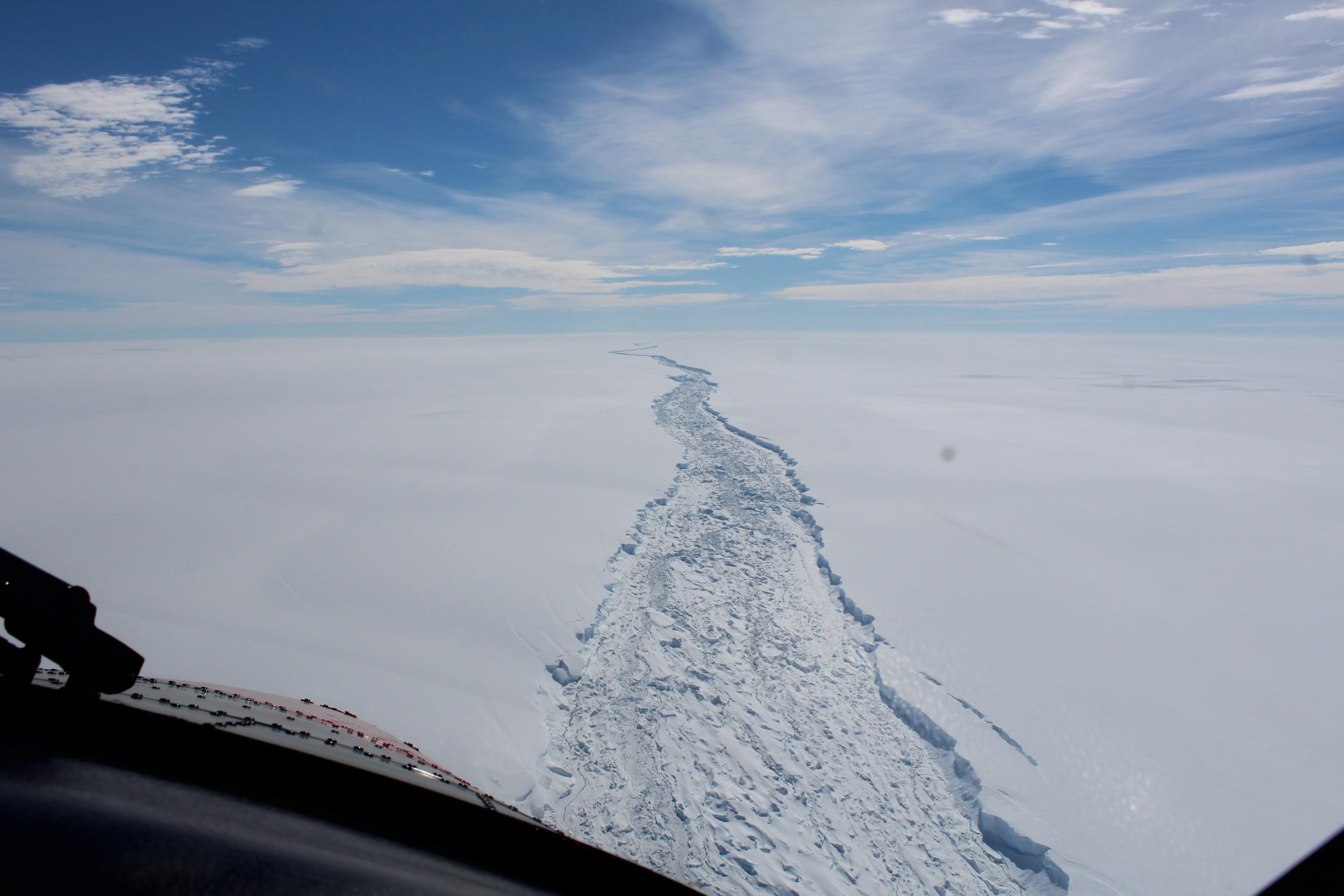Why Antarctic ice shelves the size of countries are disintegrating
Sea level rise could be ‘disastrous for coastal regions and displace hundreds of millions of people worldwide’, scientist warns

The break-up of vast ice shelves in the Antarctic – such as the recent massive iceberg – is being fuelled by a wave that moves at about half the speed of a bullet, according to a new study.
The waves, which can travel at more than 690kmh (about 430mph) and circumnavigate the entire continent in less than two days, pushes warm water onto ice shelves onto the western shores of the Antarctic Peninsula, researchers found.
Last week an iceberg about a quarter the size of Wales and weighing a trillion tonnes detached from the Larsen C ice shelf. While it will not raise sea levels as the ice was already floating, its calving could speed up the rate at which land-based glaciers enter the sea.
It is thought melting ice in Antarctica could raise sea levels by more than 15 metres by 2500 if humans keep producing greenhouse gases. There is concern that allowing global warming to go beyond 1.5 degrees Celsius could lock in significant sea level rise for centuries.
The highest rates of the loss of glacial ice have been happening on the west of the Antarctic Peninsula and scientists are keen to understand why.
Writing in the journal Nature Climate Change, the researchers said that changes in coastal winds 6,000km away in east Antarctica could produce “significant subsurface temperature anomalies” of more than 2C around much of the continent.
And this warming effect was being “focussed” on the western Peninsula, where offshore waters are already relatively warm, because the topography.
One of the scientists, Dr Paul Spence, said: “It is this combination of available warm water offshore, and a transport of this warm water onto the shelf, that has seen rapid ice shelf melt along the West Antarctic sector over the past several decades.
“We always knew warm water was finding its way into this area but the precise mechanism has remained unclear.
“That remote winds on the opposite side of Antarctica can cause such a substantial subsurface warming is a worrying aspect of the circulation at the Antarctic margin.”
The strengthening of the East Antarctic winds could be partly caused by climate change. As the Earth warms, strong westerly winds associated with storms over the Southern Ocean move south, affecting the winds near the frozen continent.
The resulting rise in sea levels could be “disastrous” for humanity, warned Dr Spence, of the University of New South Wales.
“For lack of precise estimates of future change, scientists have remained conservative in what this melting means for the globe, but recent estimates suggest Antarctica could contribute more than a metre to sea-level rise by 2100 and over 15 metres by 2500 under current emissions trajectories,” he said.
Scott's lost photos of Antarctica are bought for nation
Show all 7“This would be disastrous for coastal regions and displace hundreds of millions of people worldwide.
“If we do take rapid action to counter global warming and slow the rise in temperatures, southern storms tracks are likely to return to a more northerly position.
“That may slow the melting in Western Antarctica and bring more reliable autumn and winter rains back to the southern parts of Australia.
“It would also limit ocean warming and give some of the world's major marine-terminating ice sheets a chance to stabilise.
“It’s vital we achieve this or we are likely to see more calving of large ice shelves, similar to the recent Larsen C event.”
Subscribe to Independent Premium to bookmark this article
Want to bookmark your favourite articles and stories to read or reference later? Start your Independent Premium subscription today.

Join our commenting forum
Join thought-provoking conversations, follow other Independent readers and see their replies